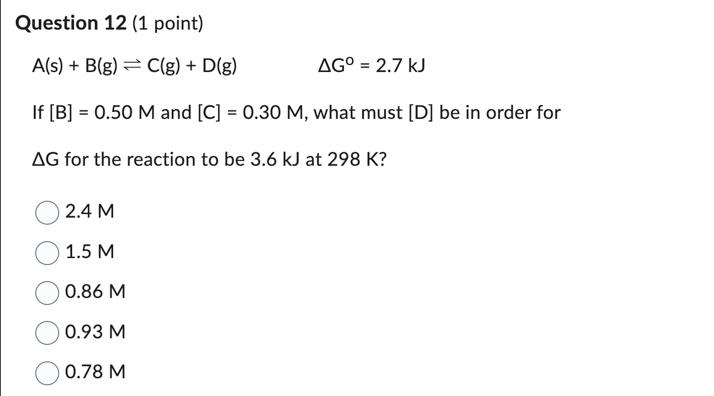Answered step by step
Verified Expert Solution
Question
1 Approved Answer
A(s)+B(g)C(g)+D(g)G0=2.7kJ If [B]=0.50M and [C]=0.30M, what must [D] be in order for G for the reaction to be 3.6kJ at 298K ? 2.4M1.5M0.86M0.93M0.78M

Step by Step Solution
There are 3 Steps involved in it
Step: 1

Get Instant Access to Expert-Tailored Solutions
See step-by-step solutions with expert insights and AI powered tools for academic success
Step: 2

Step: 3

Ace Your Homework with AI
Get the answers you need in no time with our AI-driven, step-by-step assistance
Get Started


